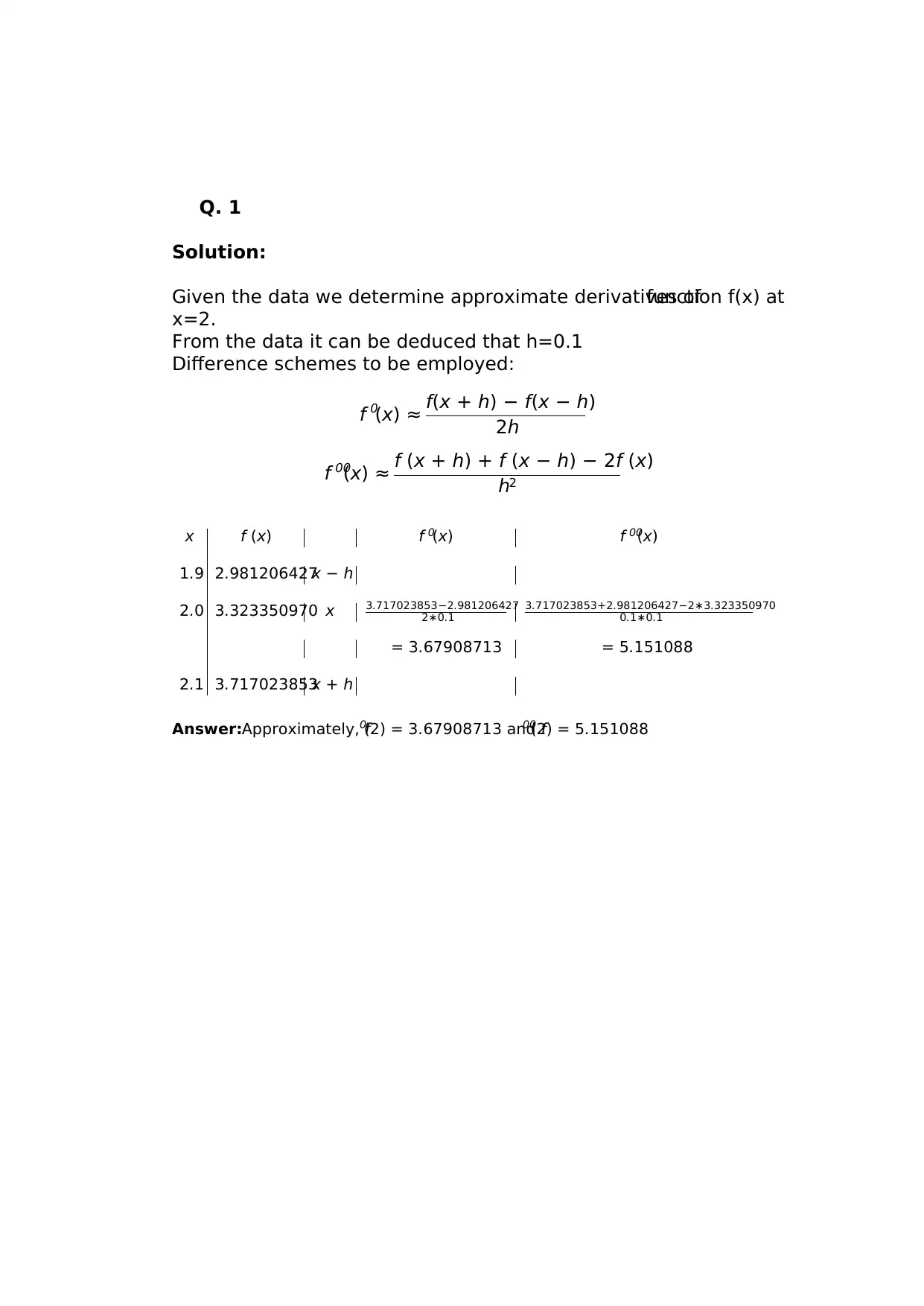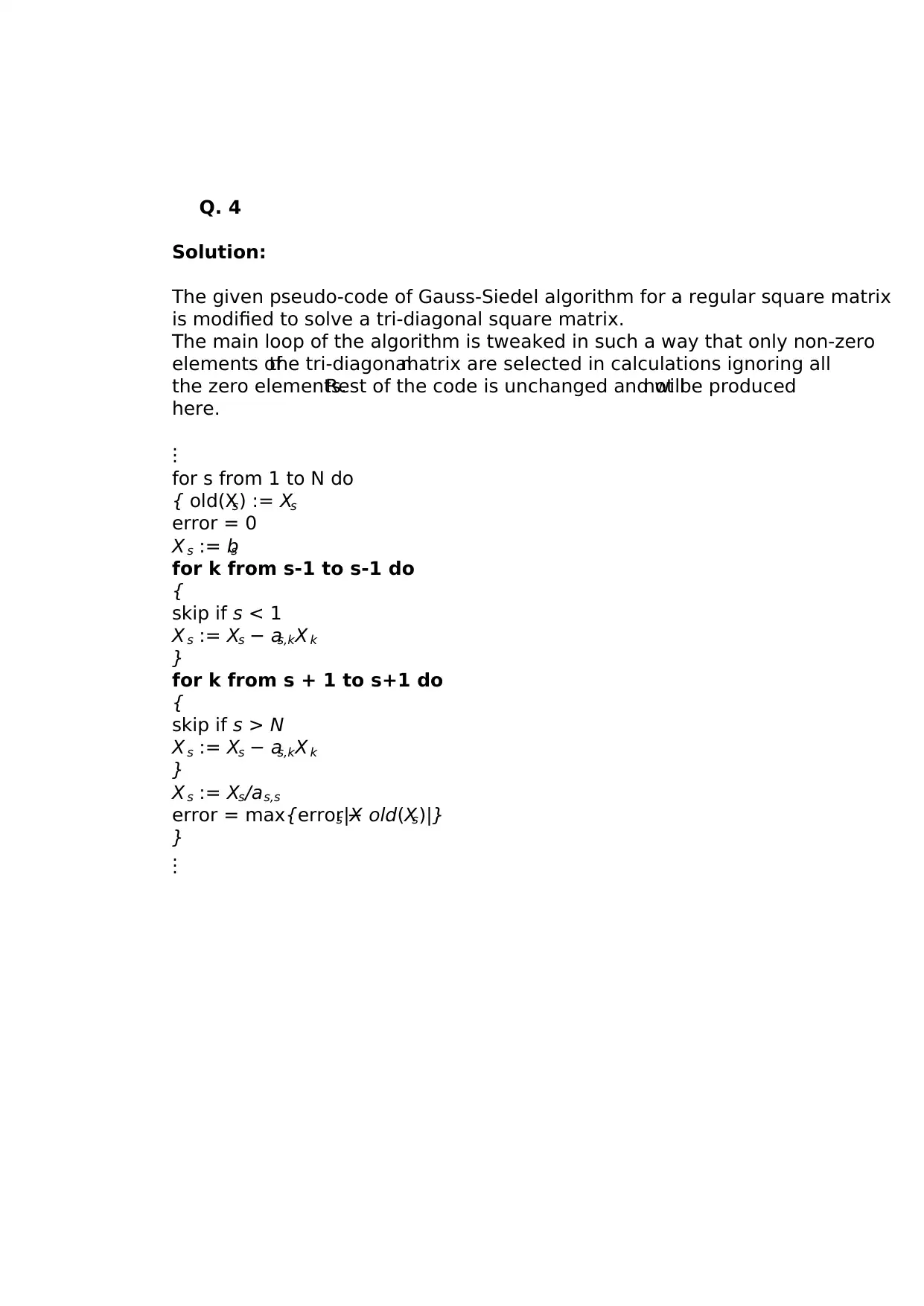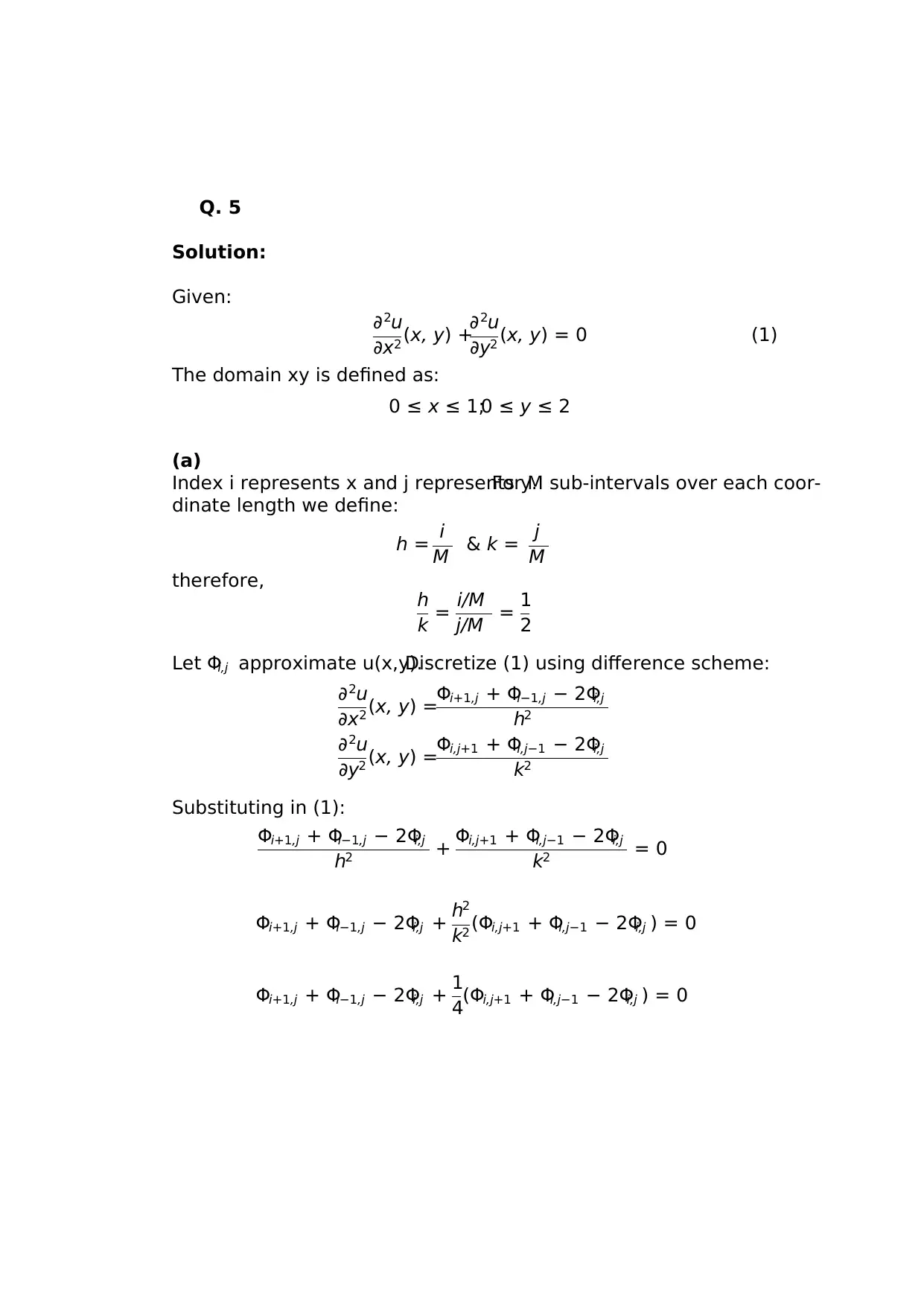CPSC 5506 EL01: Computational Science Test 1 Solutions - February 2019
VerifiedAdded on 2023/04/23
|8
|1368
|198
Homework Assignment
AI Summary
This document presents solutions to a Computational Science test (CPSC 5506 EL01) covering several key concepts. The first solution involves approximating the first and second derivatives of a function using given data points and employing difference schemes. The second solution focuses on solving the 1-D heat equation using Fourier series, deriving the solution by separating variables and applying boundary conditions and initial conditions. The third solution provides a modified pseudo-code for solving a partial differential equation (PDE) and determining the stability condition of the numerical scheme. The fourth solution presents a modified Gauss-Seidel algorithm for solving a tri-diagonal square matrix. Finally, the fifth solution involves discretizing a given PDE using finite difference schemes and deriving the resulting difference equation.
1 out of 8















![[object Object]](/_next/static/media/star-bottom.7253800d.svg)